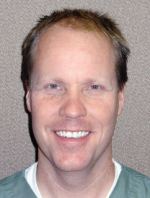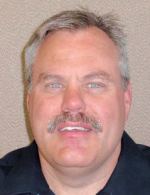Practitioners and Technicians Partner to Provide Fresh O&P Solutions

Finding new and creative approaches to meet the multitude of complex O&P patient needs is a tall order, and achieving a successful outcome often requires a special partnership. When O&P practitioners and technicians work together to develop and fabricate devices that meet these needs—functionality, comfort, convenience, durability, and affordability—the results are often amazing and far-reaching. The O&P EDGE asked several practitioner-technician teams to share stories about some of their most recent collaborations. The solutions they provided combine experience, ingenuity, and insight, resulting in game-changing service capabilities that benefit current and future patients alike.
Shopping “Outside the Box”

Charles Kuffel, CPO, FAAOP, and his team at Arise Orthotics & Prosthetics, Blaine, Minnesota, discovered the perfect component for a HKAFO in—of all places—a local farm supply store. The patient, a five-year-old girl with spina bifida presented with significant internal rotation of the feet, and her therapist had some exacting special requests.
“The therapist wanted to be able to give the child positioning AFOs while in the device, and [the ability to] transfer to a KAFO or an HKAFO while she was ambulating with a walker. Kevin Hines, CPO; Erik Engstrom; David Heyd, CO; and I put our heads together and found a product at Fleet Farm—a farm industry store similar to Home Depot,” says Kuffel, president and clinical director at Arise.
The clevis pin they discovered has a locking mechanism that allowed them to create a modular design, unlocking and separating one section from another—and rejoining the sections at the therapist’s and user’s convenience.
“We could unlock the AFO from the whole unit, or we could have a KAFO…and unlock that from the rest of the unit,” Kuffel explains. “We used these clevis pins so that the patient’s mother could put the AFO section on the KAFO uprights; pushing the clevis would then lock it into place. She could do the same thing with the KAFO, attaching it to the pelvic section. She could move easily from an AFO to a KAFO to an HKAFO on one side or bilaterally.”
From check sockets to fittings, the entire fabrication process took about six weeks and perhaps 20 modifications, Kuffel says. “We would mock up the device in the office and bring it to the therapy session. The things the therapist liked, we’d incorporate; what they didn’t like or the parents had difficulty managing—like locking the knee down or unlocking the knee—we’d take back to the lab and come up with another solution.”

Hines has created several more modular HKAFOs since that first prototype was developed last year. “We’re achieving the goals of the therapists and the doctors because sometimes they want these kids to have maximum support, and sometimes they want them to work as hard as they can possibly work,” Hines says. “The lower you go with support from the brace, the more work they have to do.”
The clevis pin solution has worked so well for the Arise team that they are still using it. “On a couple of [different] sets of KAFOs, we’ve used the same design to allow patients to remove the AFO section and basically have just a knee brace remaining,” Hines says. “[The pins] come in a variety of different sizes, so you can use them in braces for a small person up to an adult. Drill the hole, and when you vacuum form the orthosis, just slide the pin through. Because the pin has a ring that snaps over the protrusion as soon as you slide it through, it locks over the two levels of plastic and holds them securely in place.”
The technician’s part in this process was essential, Kuffel says. “Eric [Engstrom] pointed out how we could thermoform the parts but wouldn’t be able to attach component A to component B. He came up with a way to put that clevis in the lower leg portion of the brace.”

Engstrom is a board-eligible orthotist/prosthetist who is completing a residency at Arise. He currently works on both the practitioner and technician sides of the house, and says this experience is a definite plus. “I can draw on experiences on the practitioner side to help design and anticipate the need from the technician side-so I call myself a ‘practechtioner,’ ” he jokes.
Fabrication posed a particular challenge with this modular solution, specifically attaching the hardware to the thermoplastic sections, he explains. “It was a successful use of materials outside of our industry to accommodate our special needs- and to benefit a lot of patients.”
Engstrom says he believes that the connection between the practitioner and technician is critical. “Often, important aspects are lost in translation from the practitioners to the technicians. It would be helpful if more people had a tech background and understood what technicians need to do their job well. It’s incredibly important, and unfortunately the industry is moving away from teaching technical skills to people on practitioner paths.”

Creative Communication
Support authors and subscribe to content
This is premium stuff. Subscribe to read the entire article.




